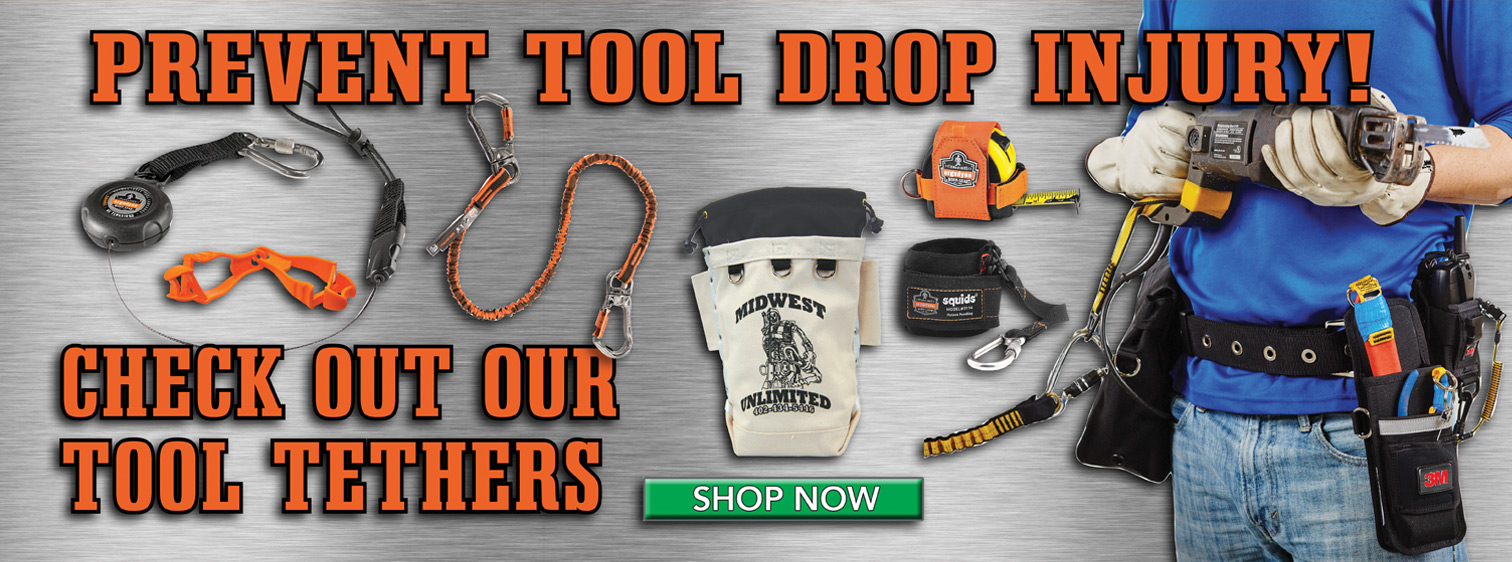Tool Tethering Drop Prevention
In 2014, a man delivering sheet rock to a construction site in Jersey City was killed by a one-pound tape measure that had slipped from a worker's hands 50 stories above. You can determine the force of a falling object from a certain height by calculations involving the physics of gravity. For example, a 3-pound tool dropped 200 feet would hit with a force of 1,062 pounds per square inch – easily causing a fatality for anyone hit.
According to the Bureau of Labor Statistics, dropped objects is the third leading cause of job site injuries, resulting in everything from fatalities to equipment and structural damage. Despite this, most companies have not deployed a drop prevention program for tools and equipment.
Tethering tools when working at height usually involves 3 components
- Tether Point
- Tool Lanyard
- Anchor Point
The tether point is usually a small hole on the tool itself, designed to support the use of a lanyard. The lanyard gets attached to both the tether point and to the anchor point. Lastly, the anchor point is the external object your tool is attached to; for example, a work belt or harness.
Workers at heights have a legal obligation to prevent accidents and injuries by securing any loose objects and tools. It’s extremely important for lanyards to be selected carefully to match the requirements of the attached tools and equipment.
Let Midwest Unlimited keep your workplace safe with our full line of TOOL LANYARDS & TETHERS listed here.

